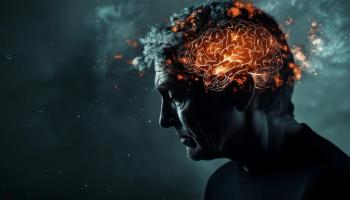
A Systematic Review of Clozapine for Catatonia
Clozapine for catatonia? Researchers performed a systematic review of the evidence as a treatment for catatonia.
RESEARCH UPDATE
CASE VIGNETTE
“Mrs Brick” is a 56-year-old Caucasian female with a history of chronic
Mrs Brick was admitted to the inpatient psychiatric unit. Laboratory studies were unremarkable. She was started on lorazepam 1 mg three times daily for catatonia and her risperidone was increased to 6 mg. After 3 days, her condition remained largely unchanged. Subsequently, her psychiatrist decided to start her on
Catatonia is a group of symptoms characterized by abnormalities in movement, speech, and behavior. The prevalence of catatonia is 9% in acute psychiatric patient populations.1 Catatonia was classically tied to schizophrenia, but it is associated with other psychiatric and medical disorders. The usual first-line treatment for
The atypical antipsychotic clozapine with its unique pharmacologic profile, including relatively weaker dopamine D2 receptor antagonism, represents a potential treatment for both catatonia and underlying psychosis. There is also evidence for catatonia following clozapine withdrawal.4 However, evidence for clozapine as a potential treatment for catatonia has not been systematically reviewed.
The Current Study
Saini and colleagues performed a systematic review of clozapine in the treatment of catatonia.5 The authors used the NICE Healthcare Databases to search Medline, EMBASE, PubMed, PsycINFO, and CINHAL from inception through June 2021. They included English-language original full-text studies in peer-reviewed journals. They included all study designs with at least 1 patient with catatonia treated with clozapine, although case reports and case series were grouped separately. They excluded studies where catatonia was not identified by a clinician or catatonia occurring in the context of neuroleptic malignant syndrome, or where maintenance clozapine was used only for secondary prophylaxis of catatonia. Data on demographic and clinical characteristics were collected for each study. Quantitative review (ie, meta-analysis) was not possible, as most studies were case reports or case series. The authors assessed the methodological quality of the case reports and case series using a published tool.6
The authors identified 849 studies from initial searches, of which 93 were included. This consisted of 79 case reports, 8 case series, and 6 cohort studies. The final sample treated with clozapine consisted of 182 patients, including 101 from case reports or case series and 81 from cohort studies. In the cohort studies, the only specified diagnosis was
In the case reports and case series, mean age was 35 (but the age range was broad), 65% were male, and 63% had schizophrenia or related psychosis. Benzodiazepines, other antipsychotics, and
Study Conclusions
The authors identified 182 patients treated with clozapine for catatonia. Full or partial remission rates were 84% in cohort studies and 81% in case reports or case series, with treatment over a period of weeks to months. The mean peak dose of clozapine was 322 mg. A major limitation is the absence of any controlled treatment trials, which precluded the use of meta-analysis. Another limitation is that data on blood clozapine levels was not available for the vast majority of patients. There may have been potential confounding by other psychotropic medications. The main study strength is that this is the first systematic review of clozapine for the treatment of catatonia.
The Bottom Line
There is very modest evidence that clozapine may be associated with improvement of catatonia. Clozapine represent a potential second-line treatment for catatonia, following failure of benzodiazepines or ECT, or if precipitated by clozapine withdrawal. Future research should use large health care databases to assess whether clozapine is associated with better outcomes in catatonia. Further support could justify a clinical trial in this area.
Dr Miller is professor in the Department of Psychiatry and Health Behavior, Augusta University, Augusta, Georgia. He is on the Editorial Board and serves as the schizophrenia section chief for Psychiatric Times™. The author reports that he receives research support from Augusta University, the National Institute of Mental Health, and the Stanley Medical Research Institute.
References
1. Sienaert P, Dhossche DM, Vancampfort D, et al.
2. Solmi M, Pigato GG, Roiter B, et al.
3. Guidance on the use of electroconvulsive therapy. National Institute for Health and Care Excellence. April 26, 2003. Accessed December 13, 2022.
4. Lander M, Bastiampillai T, Sareen J.
5. Saini A, Begum N, Matti J, et al.
6. Murad MH, Sultam S, Haffar S, Bazerbachi F.
Newsletter
Receive trusted psychiatric news, expert analysis, and clinical insights — subscribe today to support your practice and your patients.











